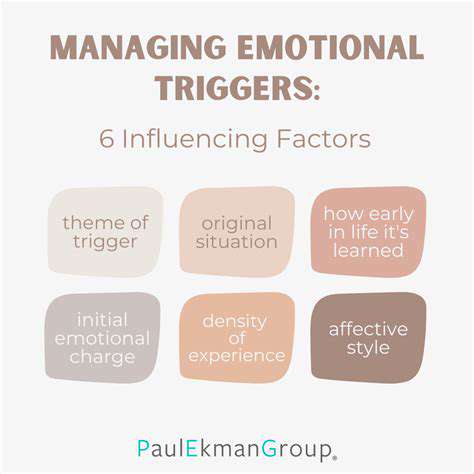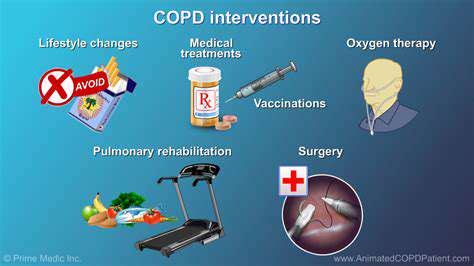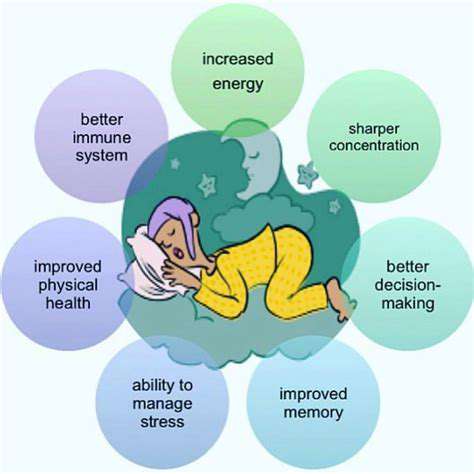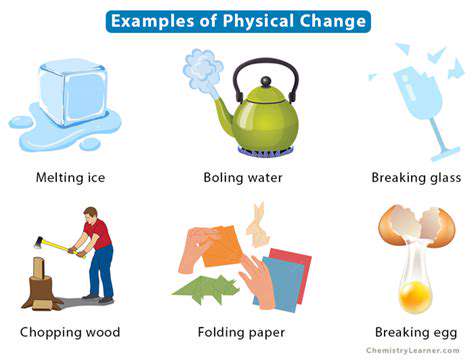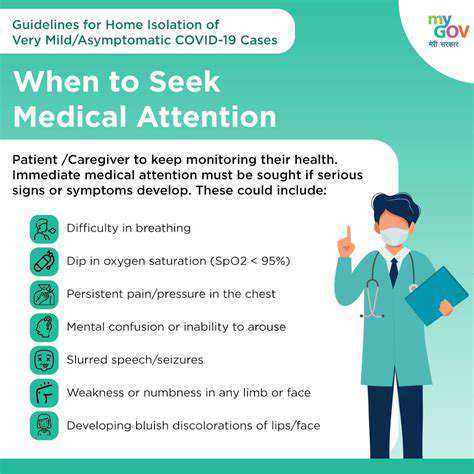Back Head Pain When Lying Down: Causes and Remedies
Common Underlying Factors for Back of Head Pain While Reclining
Postural Imbalances
Sustained periods of reclining, especially in positions that don't align the spine correctly, can lead to postural imbalances. This misalignment puts undue stress on the muscles and ligaments supporting the back of the head, neck, and upper back. A forward head posture, a common issue exacerbated by prolonged reclining, can tighten neck muscles, leading to pain radiating to the back of the head. Poor posture during reclining often results from slouching, which further strains these supporting structures and causes discomfort.
Many individuals, while relaxing, adopt postures that compress the cervical spine. This compression, even when seemingly comfortable, puts strain on the delicate structures of the neck and upper back, eventually leading to pain in the back of the head. Identifying and correcting these postural issues through conscious effort and potentially seeking professional guidance is often key to resolving back of head discomfort.
Muscle Tension and Strain
Prolonged reclining can lead to muscle tension and strain in the neck and upper back muscles. These muscles, responsible for holding the head upright and providing stability during movement, can become fatigued and tense during extended periods of rest in an improper posture. This tension can trigger pain signals that manifest as discomfort in the back of the head, as the strained muscles and surrounding tissue send pain signals to the brain.
Certain reclining positions can put particular stress on specific muscle groups. For example, deeply sinking into a recliner or leaning too far back can cause muscle imbalances and spasms. This can lead to pain and tenderness in the back of the head and neck area as the muscles contract involuntarily in response to the strain.
Underlying Medical Conditions
While often overlooked, certain medical conditions can cause pain in the back of the head while reclining. Conditions such as arthritis, particularly in the cervical spine, can cause inflammation and pain. This pain is frequently exacerbated by sustained positions that put additional strain on the already affected joints. Additionally, conditions like tension headaches or migraines can sometimes be triggered or worsened by reclining, leading to back of head discomfort.
Other potential underlying conditions, like nerve compression or inflammation of the soft tissues in the neck, might also contribute to pain in the back of the head when reclining. If the discomfort is persistent or severe, it's important to consult a medical professional to rule out any serious underlying medical issues and to receive a proper diagnosis and treatment plan.
Sleep Position and Mattress Issues
Sleep Position and Mattress Support
A common contributor to back pain when lying down is an unsuitable sleep position combined with an inadequate mattress. Poorly aligned spine during sleep can strain muscles and ligaments, leading to pain. A supportive mattress is crucial in maintaining spinal alignment and preventing excessive pressure on certain areas of the back, like the lumbar region. If your mattress is too soft, your spine may curve unnaturally, exacerbating the problem. Likewise, a firm mattress that doesn't conform to your body's contours can also cause discomfort and pressure points.
Experimenting with different sleep positions can also be beneficial. Side sleeping is often a good option as it tends to distribute weight more evenly, but ensuring proper pillow support is essential. A pillow placed between the knees while lying on your side can also help maintain the natural curve of the lower back and reduce strain. Back sleeping with a firm pillow can also be a suitable choice for many, but it is critical to ensure that the pillow correctly supports the neck and head to prevent neck and back pain.
Mattress Type and Firmness
The type of mattress you choose significantly affects your sleep position and the eventual development of back pain. Memory foam mattresses, while offering a customized contour, may be too soft for individuals with significant back issues. This lack of support can encourage poor spinal alignment during sleep. Conversely, extremely firm mattresses may not adequately cradle the body's natural curves, potentially leading to pressure points and discomfort. Understanding your body's needs and the specific characteristics of different mattress types is vital when choosing a mattress to alleviate back pain.
In addition to the mattress material, the firmness level is crucial. A mattress that is either too soft or too firm can compromise spinal alignment and lead to discomfort. Determining the appropriate firmness requires considering individual body weight and the preferred sleeping position. For example, individuals who are heavier might benefit from a firmer mattress to prevent excessive sinking. A mattress that is too soft for a heavier individual may not provide adequate support, resulting in pain.
Pillow Selection and Spinal Alignment
The pillow you use plays a critical role in maintaining proper spinal alignment during sleep, ultimately impacting the development or avoidance of back pain. A pillow that is too high can lead to neck strain, while a pillow that is too low may not adequately support the head and neck, resulting in discomfort. The right pillow should effectively maintain the natural curve of the neck, providing sufficient support for the head and shoulders without causing undue pressure. It's recommended to use pillows that cater to specific sleep positions. Choosing the proper pillow for your unique sleeping style and body type is paramount in preventing back pain, as alignment in the neck directly relates to back posture.
Furthermore, certain pillows, designed with specific support features, may prove beneficial for different sleeping positions. Consider what style of pillow best suits your sleep position, for example, if you primarily sleep on your side, a specialized body pillow, or one with extra support may help alleviate discomfort and ensure proper spinal alignment throughout the night. Experimentation with various pillow types and heights will help determine the optimal support for your individual needs and sleep style.


Lifestyle Modifications for Relief

Dietary Changes for Improved Well-being
Adopting a balanced and nutritious diet is crucial for overall health and can significantly alleviate various health concerns. Prioritizing whole, unprocessed foods like fruits, vegetables, lean proteins, and whole grains is key to providing your body with the essential nutrients it needs. Reducing intake of processed foods, sugary drinks, and excessive saturated and unhealthy fats can also lead to noticeable improvements in energy levels and overall well-being. Making gradual, sustainable dietary changes, rather than drastic shifts, is often the most effective approach for long-term success.
Consider incorporating foods rich in fiber, such as beans, lentils, and oats, into your daily meals. These foods promote healthy digestion, regulate blood sugar levels, and can help you feel fuller for longer, aiding in weight management. Limiting excessive salt intake is also important, as it can contribute to high blood pressure and other health problems. By making informed choices about what you eat, you can actively support your body's natural healing processes and experience a more positive impact on your health journey.
Regular Physical Activity
Engaging in regular physical activity is vital for maintaining a healthy lifestyle and can have a profound effect on reducing stress and improving overall well-being. Exercise plays a significant role in managing weight, boosting mood, and improving cardiovascular health. Finding activities you enjoy, such as brisk walking, swimming, dancing, or cycling, will make it easier to stay consistent with your exercise routine. Aiming for at least 150 minutes of moderate-intensity or 75 minutes of vigorous-intensity aerobic activity per week is a great starting point.
Incorporating strength training exercises, such as weightlifting or bodyweight routines, two to three times a week can enhance muscular strength and endurance. Finding activities you genuinely enjoy will help make exercise a sustainable part of your daily life and make it much less challenging to stay on track. Regular physical activity helps in managing stress, promotes better sleep, and contributes to a stronger immune system. Consistent exercise is essential for long-term health and well-being.
Stress Management Techniques
Chronic stress can have detrimental effects on physical and mental health, leading to various ailments and complications. Implementing stress-reducing techniques, such as mindfulness meditation, deep breathing exercises, or yoga, can effectively manage stress and improve overall well-being. These practices promote relaxation, reduce muscle tension, and foster a sense of calmness and focus. Engaging in activities you enjoy, such as spending time in nature, listening to music, or pursuing hobbies, can also help mitigate stress.
Adequate Sleep and Hydration
Getting enough quality sleep and staying adequately hydrated are often overlooked but crucial components of a healthy lifestyle. Adequate sleep allows the body to repair and rejuvenate, impacting mood, cognitive function, and overall physical health. Aim for 7-9 hours of quality sleep per night and establish a regular sleep schedule to help regulate your body's natural sleep-wake cycle. Prioritizing sufficient sleep directly contributes to improved cognitive performance and emotional regulation. Drinking plenty of water throughout the day is essential for numerous bodily functions, including digestion, nutrient absorption, and maintaining bodily temperature.
Staying hydrated is important for many bodily functions, and many people do not drink enough water throughout the day. Staying hydrated aids in energy levels, skin health, and overall well-being. Regular consumption of fluids ensures that cells and organs have the water they need to function at their best.
